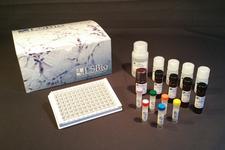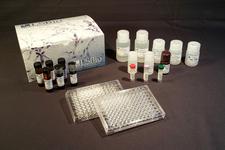order histories, retained contact details for faster checkout, review submissions, and special promotions.
Forgot password?
order histories, retained contact details for faster checkout, review submissions, and special promotions.
Locations
Orders Processing,
Shipping & Receiving,
Warehouse
2 Shaker Rd Suites
B001/B101
Shirley, MA 01464
Production Lab
Floor 6, Suite 620
20700 44th Avenue W
Lynnwood, WA 98036
Telephone Numbers
Tel: +1 (206) 374-1102
Fax: +1 (206) 577-4565
Contact Us
Additional Contact Details
order histories, retained contact details for faster checkout, review submissions, and special promotions.
Forgot password?
order histories, retained contact details for faster checkout, review submissions, and special promotions.
TFAP2A / AP-2
transcription factor AP-2 alpha (activating enhancer binding protein 2 alpha)
Sequence-specific DNA-binding protein that interacts with inducible viral and cellular enhancer elements to regulate transcription of selected genes. AP-2 factors bind to the consensus sequence 5'-GCCNNNGGC-3' and activate genes involved in a large spectrum of important biological functions including proper eye, face, body wall, limb and neural tube development. They also suppress a number of genes including MCAM/MUC18, C/EBP alpha and MYC. AP-2-alpha is the only AP-2 protein required for early morphogenesis of the lens vesicle. Together with the CITED2 coactivator, stimulates the PITX2 P1 promoter transcription activation. Associates with chromatin to the PITX2 P1 promoter region. Caution: AP-2B refers to both an alternatively spliced form of AP-2 and to the related transcription factor AP-2 beta.
| Gene Name: | transcription factor AP-2 alpha (activating enhancer binding protein 2 alpha) |
| Synonyms: | TFAP2A, Activator protein 2, AP-2, AP-2a, AP2TF, AP-2alpha, BOFS, TFAP2, Transcription factor AP-2, AP-2 transcription factor, AP2-alpha |
| Target Sequences: | NM_003220 NP_003211.1 P05549 |
Publications (4)


If you do not find the reagent or information you require, please contact Customer.Support@LSBio.com to inquire about additional products in development.









